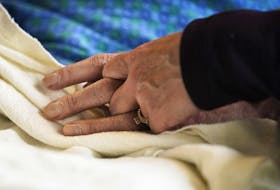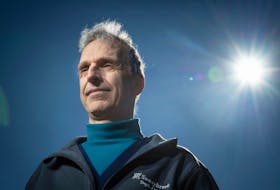Just shy of 800,000 people in Canada, according to official reports, have “recovered” from COVID-19. What the statistic ignores is the number still dealing with miserable symptoms, months out.
Now, as Canadian doctors help lead international efforts to reach a global consensus on defining what, precisely, is “long COVID,” patient groups are lobbying to have the phenomenon incorporated into Health Canada’s daily COVID-19 statistics and “recovered” cases renamed “non-infectious.”
“A large percentage of this cohort of ‘recovered’ people is still suffering. Calling them ‘recovered’ is inaccurate, misleading and insensitive,” said Susie Goulding, founder of COVID Long-Haulers Support Group Canada. “We need to start counting long-haul COVID cases.”
Nearly one year into the pandemic, growing numbers of people are reporting a bewildering array of symptoms, including breathlessness, exhaustion, tingling throughout the body, anxiety, brain fog and memory problems, lasting weeks or months after what, in many cases, started with a mild bout of COVID.
According to Health Canada, a person is considered “recovered” from COVID-19 after at least 10 days have passed since the onset of symptoms (meaning the infectious period of COVID-19 has passed), “their symptoms have improved (even if not fully resolved),” and the person no longer has a fever.
“The Government of Canada is increasingly adopting the term ‘resolved’ … as this better describes the public health implications of the case status,” the department said in an email to the National Post , “while allowing for the fact that the individual may not be recovered in terms of symptoms or longer-term health effects.”
The provinces and territories have their own definitions of “recovered.” But whether recovered or resolved, both suggest the matter is neatly settled, Goulding said. “It’s a white wash that conceals the fact that a large percentage of people are not recovering in 14 days. We are not recognized and there seems to be no real urgency in dealing with us.”
The syndrome needs to be formally named and defined so that people can be properly diagnosed and eligible for medical and financial support, said Goulding. Many long-haulers were denied testing in the first wave because of a shortage of tests. “We don’t qualify for [Canada Recovery Benefit] because we’re not actively looking for work and our EI sickness benefits are dried up. We’re being forced to start selling homes and other assets. I haven’t had benefits since before Christmas,” said the floral and event designer in Oakville, Ont.
Researchers across Canada are trying to unravel the full spectrum of COVID-19, with hopes of following 2,000 people one year out. But before decisions can be made about prioritizing a disease and mobilizing resources for it “you actually have to be able to define it,” said Dr. John Marshall, a trauma surgeon at St. Michael’s Hospital in Toronto who, as the CMAJ reported , recently chaired a World Health Organization diagnostics working group for what the WHO now calls the “Post COVID-19 condition.”
“The first step is going to be to say, OK, what precisely is this long COVID syndrome we’re talking about? Are there actually several different conditions, or a single condition?” said Marshall. What is and isn’t known about its natural course, how many who’ve had COVID get it and are there risk factors for acquiring it?
One web-based survey by British and U.S. researchers involving more than 3,700 people who had suspected or confirmed COVID-19 lasting more than 28 days tallied 205 symptoms in 10 organ systems. According to the U.K. Office for National Statistics, one in five people have symptoms that persist five weeks or more after an acute infection with COVID, and one in 10 have symptoms lasting 12 weeks or longer. A study published this week in JAMA Network Open involving 177 people with lab-confirmed COVID found one-third had lingering symptoms lasting a median of six months. Daniel Altmann, a professor of immunology at Imperial College London, has estimated that that the number of people affected by long COVID in the U.K. “is roughly equivalent” to the number with rheumatoid arthritis, which, in Canada, would be about 300,000 people.
Writing in the British Medical Journal, Altmann and Rosemary Boyton said infection with COVID-19 can leave a “lingering trail” of changes visible on CT scans of the lungs. The virus attacks the same receptors in the heart, causing inflammation of the heart muscle. Doctors have described not having the energy to open a refrigerator door or unload a dishwasher, and symptoms biting back “like a demon if you overdo it.”
“What’s really interesting to me about long COVID is that it’s clearly different from the consequence of simply having been gravely ill,” said Marshall, a professor of surgery at the University of Toronto. Research suggests only eight per cent of people with long COVID have been hospitalized.
Some studies suggest SARS-CoV-2 virus can persist in the liver and spleen. Gastrointestinal biopsies taken four months after an infection “show persistent live virus in about a third of individuals,” Altmann and Boyton wrote in the BMJ. Is it just that people haven’t cleared the virus?
Marshall’s gut tells him the bulk of cases may be consistent with an autoimmune disorder caused by the body’s widespread inflammatory response to the virus.
Changing “recovered” to “non infectious” is a “great suggestion,” Marshall said.
• Email: [email protected] | Twitter: sharon_kirkey
Copyright Postmedia Network Inc., 2021








